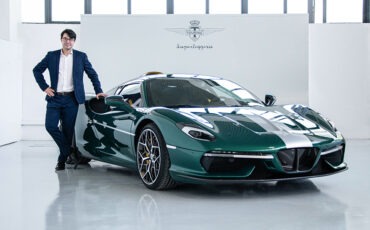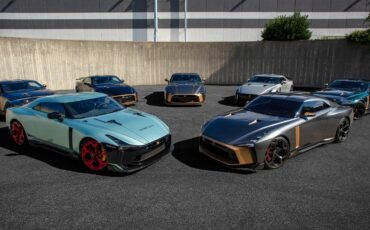
ZÜRICH, November 14, 2024 – Bertone proudly unveiled its stunning new hypercar, the Bertone GB110, at the 37th edition of Auto Zürich, held from November 7 to 10, 2024, at Messe Zürich. The event, a landmark in the automotive calendar, attracted over 60,000 visitors, marking its largest attendance ever. Auto Zürich 2024 served as a fitting platform for Bertone to showcase the GB110, further solidifying its place as a leader in high-performance automotive design.
A Swiss Premiere for the Bertone GB110
For Bertone, Auto Zürich 2024 was a momentous occasion as it introduced the GB110 to the Swiss market for the first time. The GB110 embodies the perfect fusion of Italian elegance and cutting-edge engineering, encapsulating the legacy of Bertone’s renowned craftsmanship while charting a new course for future automotive innovation.
The sleek, striking design of the GB110 caught the eyes of attendees, reflecting the brand’s iconic heritage while also signaling a bold move towards the future of luxury performance vehicles. The car’s powerful presence, combined with its exclusive Swiss debut, left a lasting impression on the audience, marking a key milestone in Bertone’s ongoing evolution.

Unmatched Performance Specs
Under the hood, the Bertone GB110 delivers uncompromising performance with its 5.2-liter V10 twin-turbocharged engine. The powerhouse engine produces an astonishing 1,124 horsepower at 8,170 rpm and 1,100 Nm of torque at 6,650 rpm. These figures translate into exhilarating acceleration, with the GB110 reaching 0-300 km/h in just 12.9 seconds.
Further elevating its performance credentials, the GB110 is equipped with a dual-clutch automatic transmission, ensuring both blistering speed and precise control. The car reaches an electronically limited top speed of 350 km/h, combining the best of power and handling for an unrivaled driving experience.
The Bertone GB110’s debut at Auto Zürich 2024 showcased not just the prowess of Italian automotive engineering, but also a glimpse into the future of luxury hypercars, promising an unmatched blend of style, performance, and innovation.






